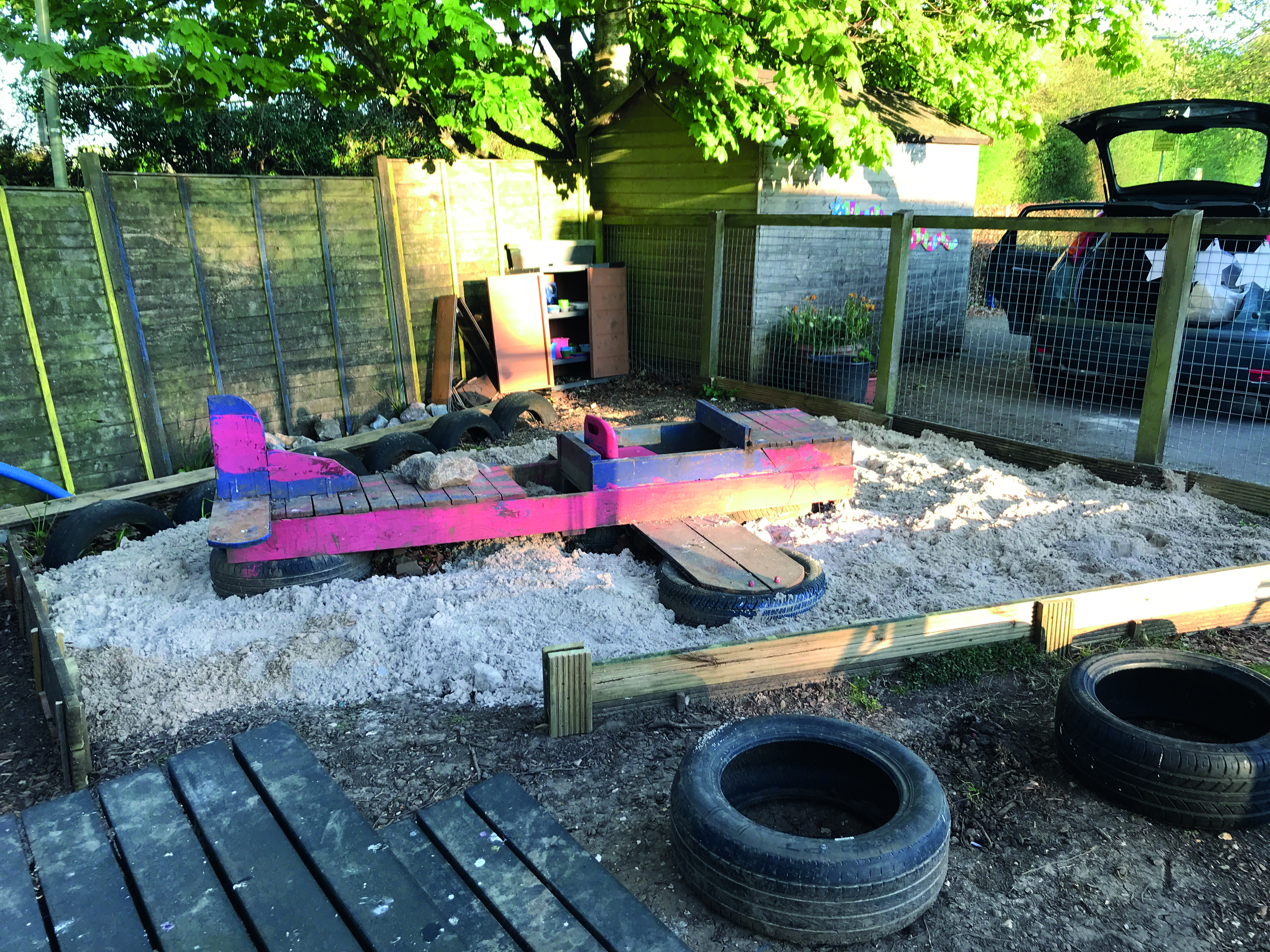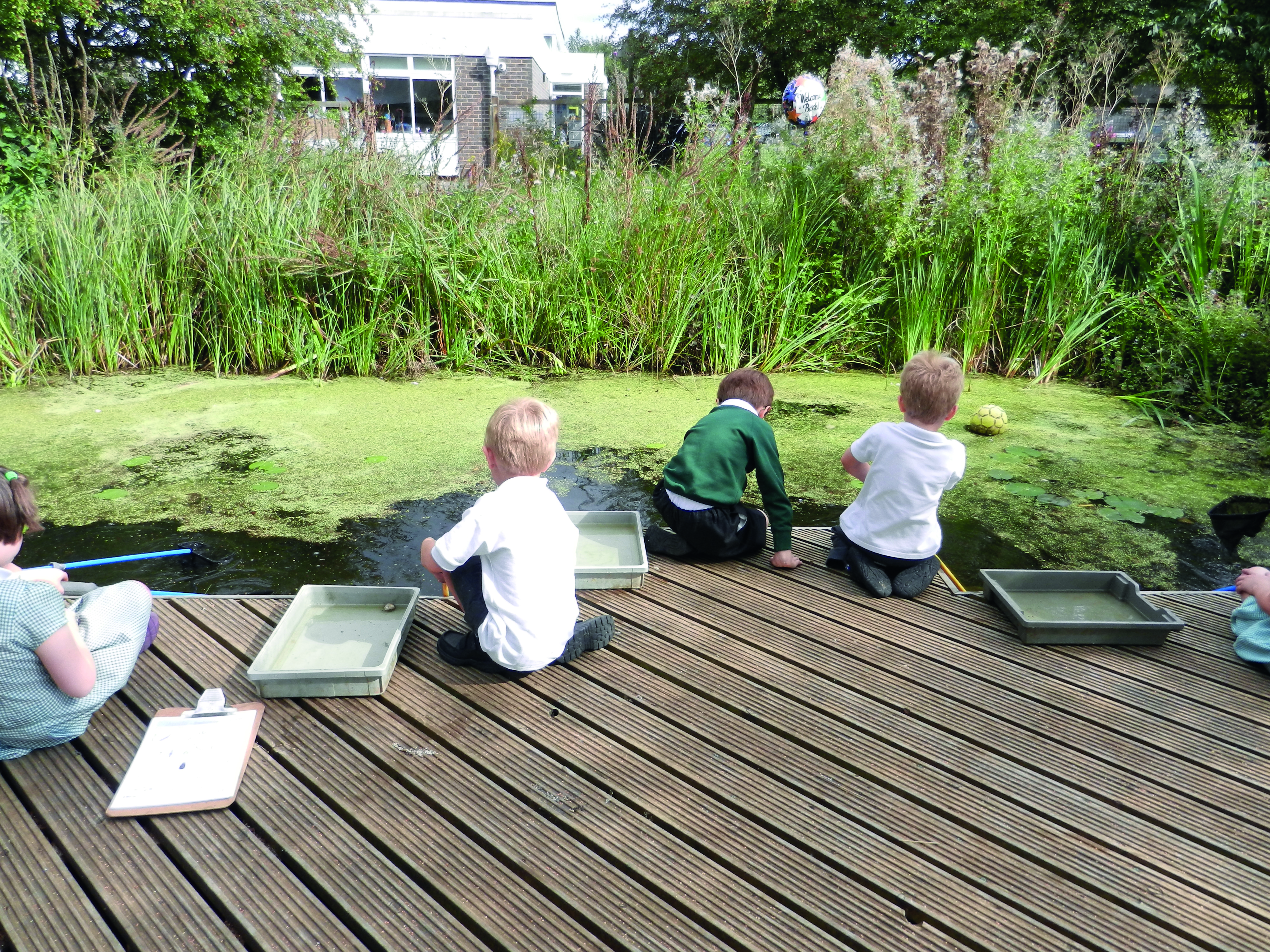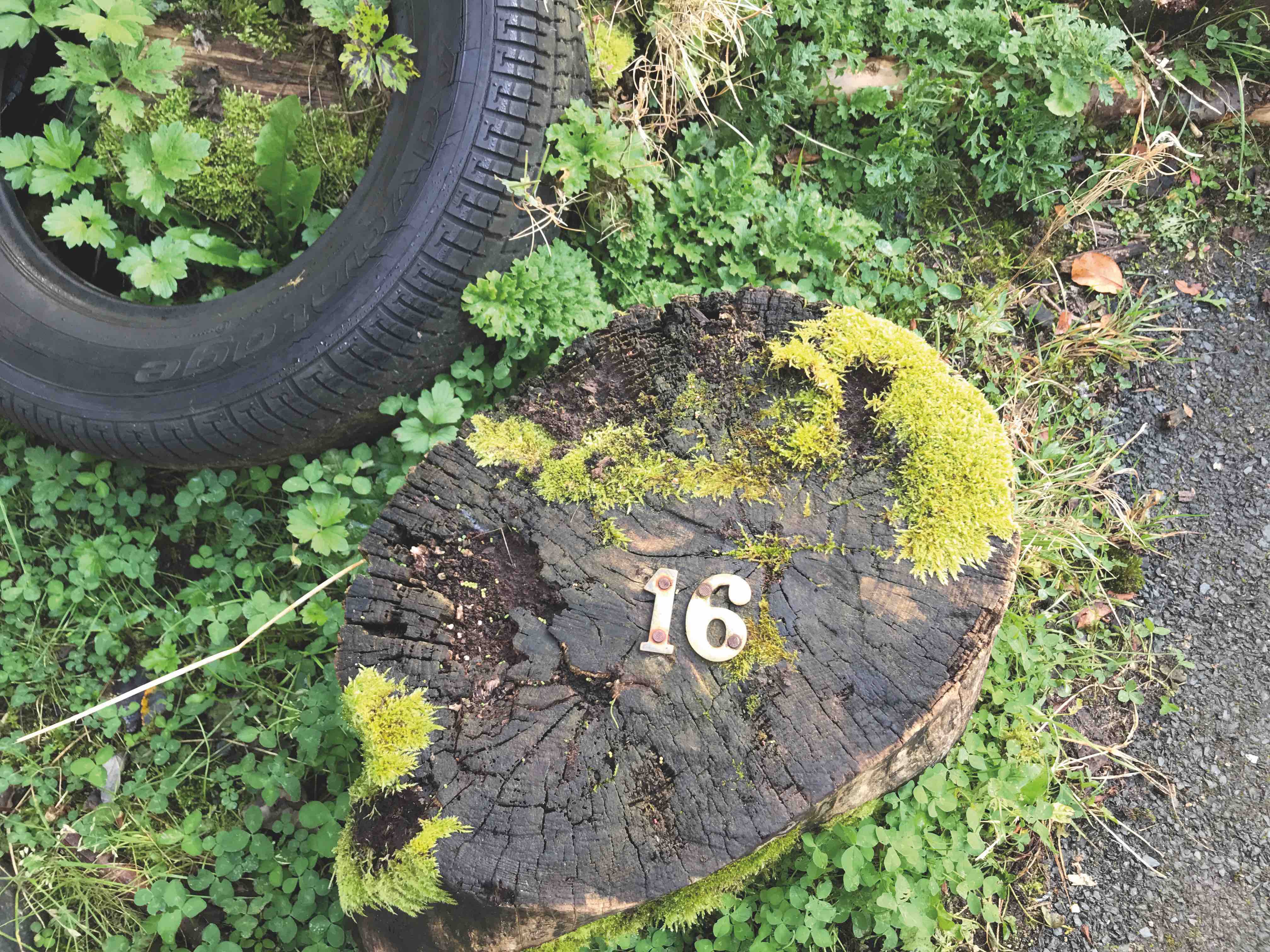
As children return to the once familiar surroundings of their setting, the delicate and nuanced process of easing them back into routines, places and relationships will rightly focus on the needs of the child, not the needs of the curriculum, and the process will be different from the ‘settling in’ period for new starters.
Young children who have been subjected to disruption will benefit from support to reintegrate themselves into the spaces and places they have loved, and given what we now understand about transmission of Covid-19 in young children, providing a free-flowing, rich and diverse outdoors space should be a high priority for settings.
We know that play and physical activity outdoors have a positive impact on life expectancy, well-being and symptoms of stress and depression. Many children will have been largely housebound through large chunks of 2020, and being outdoors, continuously and freely, will be crucial.
Investing time – and yes, money – in outdoors will extend its value and provide an effective canvas for delivering and assessing learning when these aspects of the early years curriculum become priorities again.
PUSHING THE BOUNDARIES

Make the most of what you have, and push physical and intellectual boundaries, so:
- Extend the time spent outdoors. Be generous, as children will want to experience outdoors even more than usual. More time outdoors offers more opportunities to observe where children’s interests will flow when time constraints are removed.
- Take snack and lunch outdoors. Bus Stop Pre-school, Nursery and Forest School in Bookham, Surrey is the first early years setting to gain Gold standard in the Council for Learning Outside the Classroom awards. Its investment in an event shelter means that even in inclement weather, lunches and snacks in the open are an opportunity for catching up with friends and discussing the possibilities for the afternoon. It also allows staff to make notes or update learning journals so they are fully focused on engaging with children at other times.
- Leave resources out, rather than always packing away, so children can return to them to continue their explorations. Consider which traditional ‘indoor’ tasks could actually be done outdoors. Children at the three Farley Nurseries, in Hampshire and Wiltshire, are outdoors for most of the day, and, in fact, Farley Sparsholt only has yurts (albeit very spacious, comfortable and warm ones) for indoor retreat. Wherever possible, babies sleep in ‘dream coracles’ (sleep pods) or in traditional sprung prams, under peacefully swishing trees. Older children help set up the sleeping areas, and when babies and toddlers awake, they can return to their previous explorations.
- Explore mechanisms that support well-being, involvement and contentment. Consider taking toddler yoga, Pilates or stretching sessions outdoors. The slow, controlled movements are wonderful for building strength in children’s growing bones and correcting posture. Exercise in the fresh air encourages mindful breathing – even if younger children don’t realise that is what they are doing. There are dozens of books, posters and websites to help you integrate these exercises into children’s days and help the formation of healthy habits.
- Consider small groups. In Denmark, research by the main teachers’ union during lockdown suggests that smaller groups of children led to higher levels of well-being. In a blog post, Dorte Lange explains, ‘We can see now very clearly that smaller groups bring a higher degree of well-being for the kids, and give the teachers more contact with the kids during the day.’ My holiday playscheme looked quite different from its usual ‘free ranging, everything goes’ approach this summer, but the staff team also noticed that smaller groups led to less conflict – and, interestingly, mixed ages in the groups (as siblings needed to be in bubbles together) resulted in bonding between children we might not have expected to see playing together.
- Learn lessons from Japan in managing hygiene and cohorts. Some of the practices of Japanese kindergartens could be usefully adopted in the UK. Last year, I wrote about my studies of settings in Japan, many of which spend most or all of the day outdoors, for Nursery World. Key to our new normal are the routines they use to manage hygiene and cohorts: all settings have outdoor handwashing facilities and children wear coloured caps or tabards to distinguish their cohort but are allowed to mingle and mix as they please. Adults routinely wear face masks – not, as I had assumed, to protect themselves, but to ensure they also protect others. If children have a sniffle, it is common to see them wearing masks at kindergarten too.
CASE STUDY
Sun Hill Infant School, Hampshire

On taking up her first teaching role at Sun Hill Infant School, Denise Grant applied many years’ experience in pre-schools to explorations of how Reception could make more use of a mature and extensive school site. She paid particular attention to enabling a generous and distinctive curriculum that encourages communication, collaboration and critical thinking.
Her main areas for change outdoors have been the digging area (mud lab) and the pond enclosure, both of which provide rich opportunities for STEM learning. ‘Outdoors,’ explains Ms Grant, ‘children’s play goes beyond anything I could plan for in the classroom. We spend a lot of time in the digging area, and I spend a lot of time observing and am on hand to extend learning when I can see children are fully engaged.’
Knowing each child’s next steps is the key to making the most of opportunities that arise outdoors. ‘For quieter children, open-ended loose parts in the digging area have encouraged conversation and shyer children to come out of their shell, I think because they don’t feel as “observed” as they do indoors, even though observation is one of the most important things I do there,’ says Ms Grant.
There is no need to ‘set up’ scenarios outdoors, since without the four walls of a classroom, an abundance of space means children can occupy all the room they need, and a profusion of compelling fixed and loose resources provides infinite play combinations.
The Reception team at Sun Hill – which comprises Ms Grant, a very experienced teaching assistant and, occasionally, the head teacher – use SeeSaw to record and reflect with children.
Ms Grant gives the example of a child for whom the expressive and open-ended learning in the digging area was having a measurable impact on their understanding of number. Later, reflecting on the images and comments the child had made, she was able to connect that play to the more formal maths resources back in the classroom, which the child was finding less easy to comprehend.
However, ‘learning outdoors doesn’t need to go “back to the classroom”,’ says Ms Grant. ‘If I know that children need to work on some aspect of maths or communication, I’ll support that in the digging area or pond. My planning probably doesn’t look like my colleagues’ in KS1, but the head understands that we are working towards, and meeting, our goals.’
From September, dynamics, friendships and resources are all going to have to be handled differently. Not all resources indoors will be available, but as Ms Grant intends to continue to prioritise and develop outdoors, she expects the new intake to settle into new routines.
‘During lockdown, my anxieties as a teacher – about how the children would respond to the changes in their classroom layout, the missing resources, the different friendship groups – quickly diminished. They were so happy to be back and just proved how resilient they really were. Observation is such a powerful tool to understand how wonderfully creative the children can be outdoors, thinking critically, working as a team and developing their physical capabilities.’
‘But is outdoor play really “learning”?’

Is outdoor play really ‘learning’? Yes! It is. Plenty of settings across the UK operate mostly or entirely outdoors, and can attest to and demonstrate the quality of learning that takes place. For settings less familiar with planning for outdoor learning, there are a few key pointers to remember:
- It’s still learning. Learning objectives will still be shaped by the needs of each individual child – and after many months away from the setting, it may be necessary to revisit children’s developmental milestones. If you’re used to planning quite rigorously indoors, practising ‘in the moment’ planning outdoors could transform how you evaluate outdoors – or parts of it – as a setting for meaningful learning. Kate Rice, owner of Bus Stop Pre-school in Surrey, explains that embedding hygiene routines was the only ‘real’ planning they are now doing, and that they now spend almost all day outdoors, following the children’s interests and focusing on their well-being. The team is noting that children are ‘building resilience and rediscovering their individuality’ as they enjoy the freedom and independence that playing and learning outdoors is giving them.
- Introduce freely chosen movement into learning activities as this can only benefit the child, especially one that’s been cooped up indoors for so long. The link between movement and cognition and movement and our ‘happy hormones’ is well documented, and for very young children, ‘embodied’ or ‘bodyful’ learning should provide the framework for development. Outdoors offers so much more than just a place to ‘let off steam’, but some children will have missed the opportunities for big, bold movements and they should be encouraged.
- Reflect on your outdoor spaces and places. Which can support children’s learning objectives? What resources might you need? Will you take indoor resources outdoors, or use the resources already available out there? How long will it take, and can the objective be integrated into more free-flowing outdoor play? Outdoors is a unique learning environment, affected by weather, light levels, the seasons and ambient noises. Identify what’s special or different about your outdoor space, and build those unique factors into a new way of supporting children’s development. Simply taking indoor approaches outdoors won’t fully exploit the special nature of outdoor play and is likely to be frustrating for children and adults alike.
- You’ll still need to observe and assess. If the system you use for indoors won’t transfer to outdoors, you’ll need to adapt it to fit, or think about which elements of outdoor learning absolutely must be recorded. Settings are no longer expected to produce reams of ‘evidence’, but after planning for learning outdoors, you may need to remind yourself to identify what happened outdoors in order to build the child’s next steps; be ‘professionally curious’. If you’d rather not interrupt children with photographs or video, a discreet audio recorder (for example, a mobile phone or tablet) propped up nearby will ensure discussions and ambient sounds are not missed.
- It’s okay to get involved outdoors. I often observe practitioners – with all the right intentions – standing or sitting apart from children, allowing them to develop their own playful pathways. Early years author and trainer Kathy Brodie explains, ‘Indoors, practitioners are much more ready to engage directly with the activity, whether it’s child- or adult-led – you see them kneeling down, taking part. We need to become much more ready to join in – if invited – outdoors.’ The skills you use to decide whether to interact indoors are just as valuable outdoors, so be part of the playful learning – and Dr Julie Fisher’s writing on interactions versus interference will help you explore the subtleties of this approach.
MORE INFORMATION
- Coronavirus: A Book for Children about Covid-19 by Elizabeth Jenner, Kate Wilson and Nia Roberts, and illustrated by Axel Scheffler in partnership with the London School of Hygiene and Tropical Medicine
- Online search: ‘yoga [or Pilates/mindfulness] toddlers UK’
- Interacting or Interfering? Improving interactions in the early years by Julie Fisher
- ‘Risk and return’, ‘Have a go!’, ‘Wild ideas’ and ‘Go to town!’ – Julie Mountain’s four-part series about kindergartens in Japan – are at: www.nurseryworld.co.uk
With thanks to Malton Montessori, Bus Stop Pre-school, Windmill Nursery School, Sun Hill Infant School and My Little Explorers Forest School for case studies and information for this series









